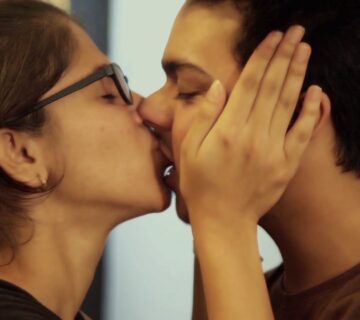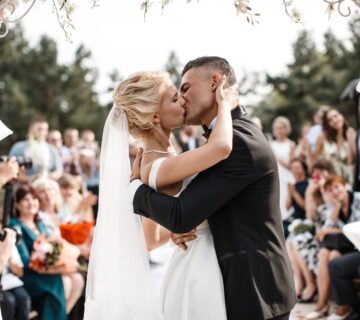A first kiss is a thrilling rite of passage—overflowing with hope, nervousness, and anticipation. Whether you’re 16 or 60, learning how to kiss for the first time can be equal parts exciting and intimidating. This guide gives you everything you need for a natural, memorable, and romantic first kiss.
Why First Kisses Matter
Your first real kiss is more than just lips meeting—it’s a launching pad for deeper connection and self-confidence. Psychology shows that first kisses spark surges of dopamine and oxytocin, the “feel-good” chemicals that help cement trust and attraction. And culturally, a first kiss marks a new phase—sometimes, the very start of love.
Step 1: Prepare for a Great First Kiss
Prioritize Hygiene and Appearance
-
Breath matters: Brush your teeth and use mouthwash before you meet your date. Carry mints or gum for last-minute freshening (remember to discreetly dispose before the kiss).
-
Soft lips: Use gentle lip balm, but skip sticky glosses.
-
Dress comfortably: Choose something that helps you feel at ease and confident.
Choose the Right Setting
A first kiss is best shared in a calm, somewhat private place—think a quiet park bench, a stroll under the stars, or the end of a cozy evening at home. Avoid crowded and noisy spots, which can add awkwardness or pressure.
Step 2: Reading the Moment (and Getting Consent)
Timing is everything. The best first kisses happen when both people feel ready. Look for these signals:
-
Lingering eye contact: Especially if you notice their gaze travel to your lips.
-
Proximity: Are they standing or sitting closer, or touching your arm or hand?
-
Mirroring: Subtle copying of your gestures or posture is a great sign.
-
Smiling and laughing: Comfort and relaxation often mean readiness.
When in doubt, ask! Simple phrases like, “Can I kiss you?” or “I really want to kiss you right now,” are not only respectful—they’re genuinely romantic and boost comfort for both people.
Step 3: How to Kiss for the First Time—Step-by-Step
Build Up Slowly
Let conversation and chemistry flow naturally. Start with light physical contact, like holding hands or touching their arm Kiss for the First Time.
Lean in Gradually
-
Close the distance slowly—move in, but give your partner time to meet you halfway.
-
Head tilt: Tilt your head slightly to avoid bumping noses (statistically, most people tilt right).
Make Eye Contact
Before your lips meet, soft eye contact or a gentle smile can communicate reassurance and real intent.
Initiate the Kiss
-
Keep it simple: Start with a closed-mouth, gentle kiss. Keep your lips soft and relaxed, not tense or puckered.
-
Don’t use tongue: Beginners, take note—save “French kissing” for when both of you feel comfortable.
-
Breathe through your nose: Avoid breath-holding, especially for a longer kiss.
-
Use your hands gently: Place them on their arm, waist, or softly cup their face.
Mirror and Respond
Kissing is a dance for two. Adjust your pace and pressure in response to your partner—if they lean in further or linger, enjoy the moment.
End Smoothly
-
Pull away with a smile or a gentle compliment, such as “That was really nice.”
-
If you feel nerves or giggles, let them out—most first kisses are a little awkward, and that’s part of the charm.
Common First Kiss Mistakes (and How to Avoid Them)
-
Forgetting consent: If your partner hesitates or seems uncomfortable, don’t push. A quick check-in is always appreciated.
-
Bad breath or chapped lips: Keep hygiene in mind—sometimes, all it takes is a mint or some balm.
-
Rushing or surprise attacks: Don’t pounce. Moving slowly reduces anxiety and boosts enjoyment.
-
Trying to imitate movies: Real kisses are about authenticity, not perfection.
What To Do After the Kiss
-
Smile and enjoy the moment; sometimes, a warm laugh can ease lingering nerves.
-
Compliment or thank your partner: Show appreciation for their trust and vulnerability.
-
Gauge the mood: If both seem relaxed and happy, another gentle kiss might be welcome!
First Kiss FAQs
How long should a first kiss last?
Short and sweet is great for most first kisses. As comfort builds, you can linger or deepen it naturally.
What if I feel awkward?
That’s normal! Most people are at least a little nervous. Laughing together can instantly relax the mood.
Should I use my tongue?
No. Start with closed-mouth kisses. If both signal interest, gentle tongue kisses can come later.
How do I handle rejection?
If your partner isn’t ready, respect that. Smile, give them space, and show empathy. Consent and respect make connections stronger.
Tips for Building Confidence
-
Rehearse telling your partner you want to kiss them. Practicing can help ease nerves when the moment arises.
-
Embrace awkwardness—some of the most special moments happen when things aren’t perfect.
-
Remember, everyone has a first kiss. Over time, what feels awkward today will become a cherished strength tomorrow.
Read More: First Kiss Mistakes: The Ultimate Guide to What NOT to Do—And How to Get It Right
Final Thoughts
A Kiss for the First Time is more about connection and sincerity than flawless technique. Don’t stress about perfection—what matters is comfort, presence, and the courage to let yourself be vulnerable. As you step into this moment, take a breath, lean in, and let your heart lead the way. Here’s to your first kiss—may it be the start of something wonderful.








[…] Read More: How to Kiss for the First Time: The Ultimate Guide for Beginners […]